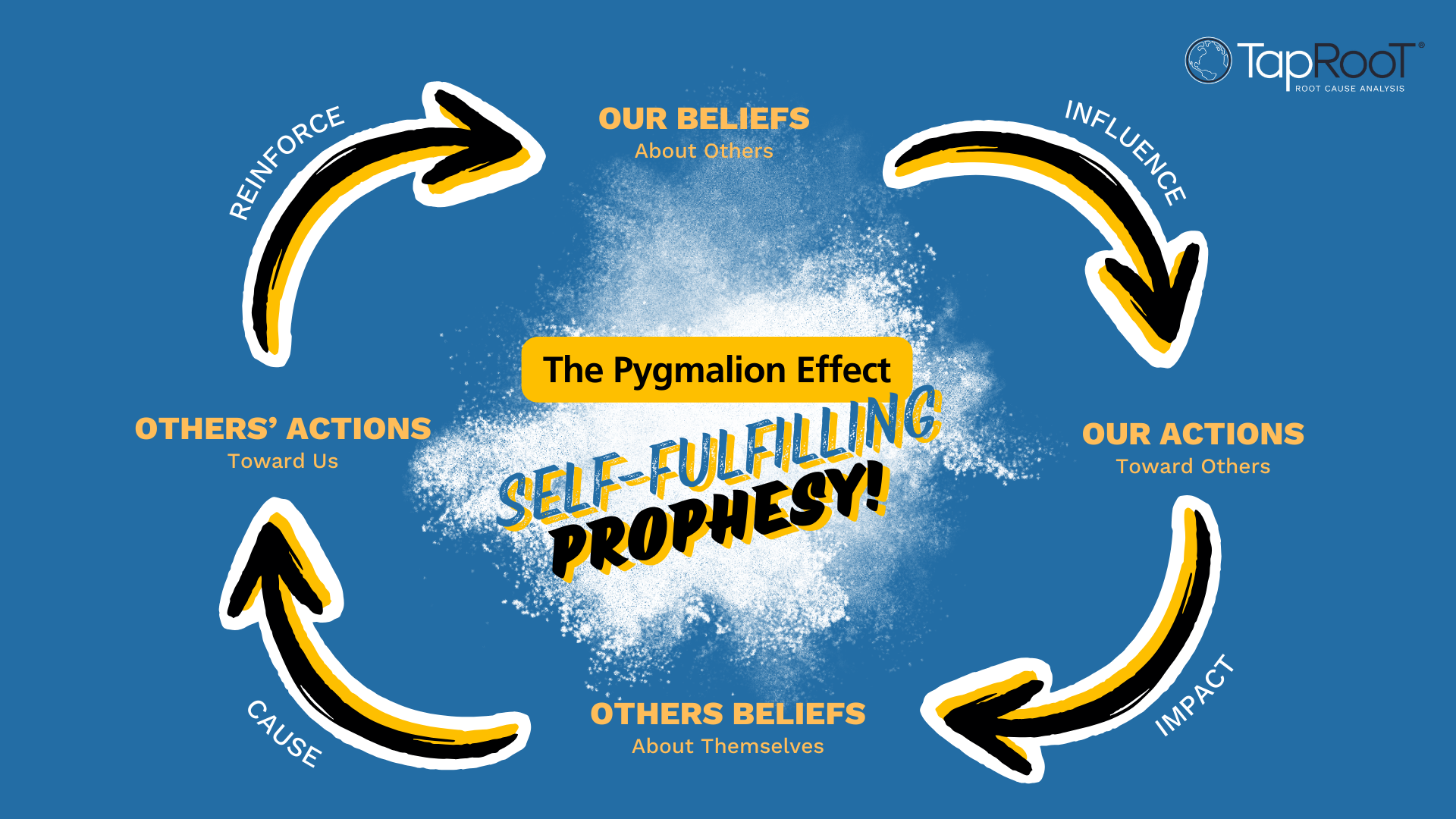The Pygmalion Effect and RCA: How Expectations Influence Performance

You might not realize how a powerful cognitive bias, known as the Pygmalion Effect, impacts everyone. I experienced this firsthand during my early education, where my teachers’ high expectations pushed me out of my comfort zone. They recognized that I was merely “skating by” and refused to let me settle for less than my true potential. Their belief in my capabilities drove me to strive harder and achieve more. This personal experience mirrors how, in organizational behavior and performance management, the Pygmalion Effect underscores the significant role of expectations. When leaders and peers hold high expectations, it often leads to improved performance. On the other hand, Root Cause Analysis (RCA) is crucial for identifying and addressing underlying issues rather than just symptoms. This article explores the connection between the Pygmalion Effect and RCA, illustrating how positive expectations can enhance problem-solving and overall performance.
The Pygmalion Effect suggests that setting higher expectations for individuals leads to better performance and outcomes.
Understanding the Pygmalion Effect
The Pygmalion Effect is a psychological phenomenon where higher expectations from leaders or peers lead to improved individual performance. This effect is based on the idea that people tend to perform better when they are expected to do so, as these expectations can influence their motivation, self-confidence, and overall effort. The term is derived from the Greek myth of Pygmalion, a sculptor who fell in love with a statue he had carved, which then came to life.
Key Aspects of the Pygmalion Effect:
Origins: The Pygmalion Effect was first described in the educational context by researchers Robert Rosenthal and Lenore Jacobson in their 1968 study. They demonstrated that students randomly selected as “bloomers” and identified as likely to show significant academic improvement actually did perform better due to their teachers’ higher expectations.
Mechanism: Expectations can be communicated both explicitly and implicitly. Explicit communication involves direct statements about performance potential, while implicit communication includes non-verbal cues such as body language, tone of voice, and the level of attention and encouragement given.
Impact: High expectations can lead to a positive feedback loop where individuals feel more confident, motivated, and supported, resulting in better performance. Conversely, low expectations can lead to poorer performance due to a lack of confidence and motivation.
Applications in Different Contexts:
- Education: Teachers’ expectations can significantly influence students’ academic performance. When teachers believe in their students’ potential, they are more likely to engage and support them, leading to better outcomes.
- Workplace: Managers and leaders can impact their employees’ performance through their expectations. High expectations can boost morale, motivation, and productivity, while low expectations can result in disengagement and underperformance.
- Personal Development: Individuals’ self-expectations can also play a crucial role in their personal growth and achievement. Believing in one’s ability to succeed can drive effort and persistence.
Impact on Employee Performance
Positive expectations from leaders can lead to increased confidence, motivation, and better performance among employees. When employees sense that their leaders believe in their abilities, they are more likely to take on challenges, persist in facing difficulties, and strive for excellence. This can create a virtuous cycle where success breeds further success.
Conversely, low expectations can demotivate employees, leading to underperformance. If employees perceive that their leaders doubt their capabilities, they may internalize these doubts, resulting in reduced effort and engagement. This self-fulfilling prophecy can create a downward spiral of declining performance and morale.
Applying the Pygmalion Effect in RCA
Techniques for leaders to set high but realistic expectations during RCA activities include:
- Encouraging a culture of inquiry: Promoting curiosity and critical thinking.
- Fostering psychological safety: Ensuring team members feel safe voicing concerns and ideas without fear of retribution.
- Setting clear goals for RCA sessions: Defining the desired outcomes and emphasizing the importance of finding and addressing the true root causes.
Positive expectations can significantly enhance the RCA process by encouraging thorough and honest participation. When leaders set high expectations for the RCA activities, team members are likelier to engage deeply, share insights openly, and collaborate effectively to identify root causes and develop robust solutions.
Strategies for Leaders
Leaders can implement the Pygmalion Effect in their RCA practices through the following strategies:
- Setting clear, positive expectations: Articulating belief in the team’s ability to achieve excellent results.
- Providing regular, constructive feedback: Offering guidance and recognizing progress to maintain momentum.
- Encouraging a growth mindset and resilience: Promoting the view that challenges are opportunities for learning and improvement.
To measure the impact of the Pygmalion Effect on RCA outcomes, leaders can use various methods and tools:
- Performance metrics: Tracking key performance indicators (KPIs) related to problem-solving effectiveness, such as the number of successful corrective actions and the time taken to resolve issues.
- Feedback surveys: These surveys collect input from team members on their perceptions of expectations, support, and engagement during RCA activities.
- Longitudinal studies: Analyzing trends over time to assess the sustainability of improvements and the long-term impact on organizational performance.
Conclusion
The Pygmalion Effect highlights how deeply expectations can influence performance. By consciously applying positive expectations to the RCA process, you can significantly boost problem-solving effectiveness and drive continuous improvement. As you work towards excellence in your organization, using the Pygmalion Effect can be a powerful tool to unlock your team’s full potential and build a high-performance culture.
Continued Reading
The Power of the Pygmalion Effect
How the Pygmalion Effect could be impacting your teams’ performance
For more insightful content and updates, connect with me on LinkedIn.




